Information
The Information option shows all the information about the current process:
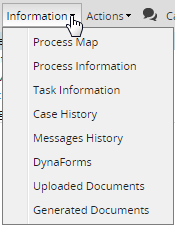
The Information option is available when starting a new case or when opening a case from the Inbox, Draft, Participated, Unassigned, and Paused folders.
Process Map
By clicking on the Process Map option, a new tab will open next to the current case:
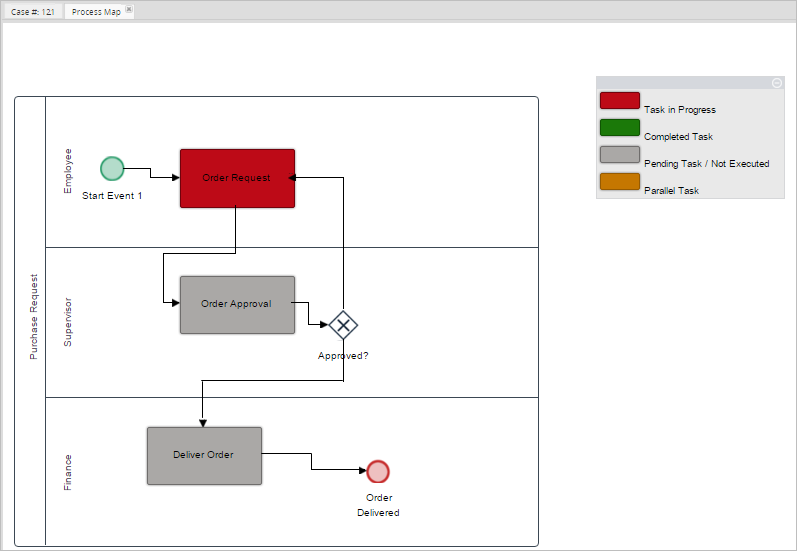
In this tab, the user can see which task the case is at, as well as the status of the other tasks in the case. Each task in the process map is color-coded according to its status. Next to the process, there is a key with the colors explained:
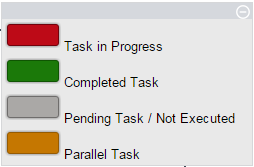
Take into consideration that the process map shows the state of one case at a time. Therefore, in the case of start events that work as sub-processes, the process map will show only the state of the tasks belonging to the current case, since when a start event is executed a brand new case is created.
For example, when executing a process similar to the image below:
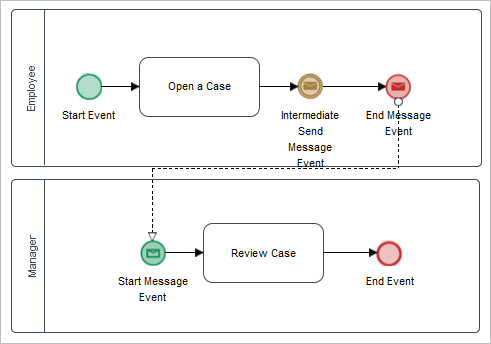
This process creates two cases, each one with their own cycle.
When executing the process, the first case will be created (case #30). After the task is completed, the End Message Event will finish the current case. TThe process map will show only the state of the tasks executed until then (first pool).
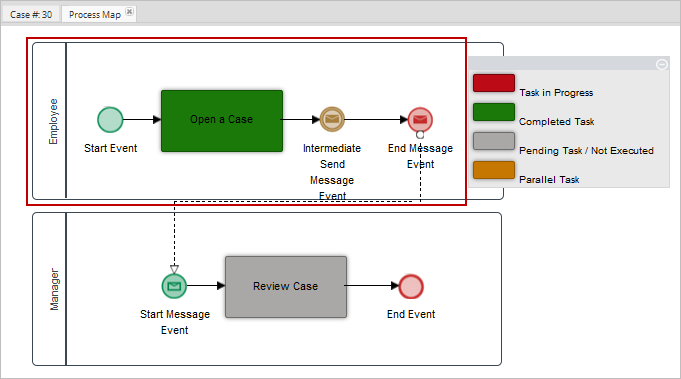
As soon as the End Message Event ends case #30, a new case (case #31) will be created by the Start Receive Message event. The process map of case #31 will show only the state of tasks inside the second pool.
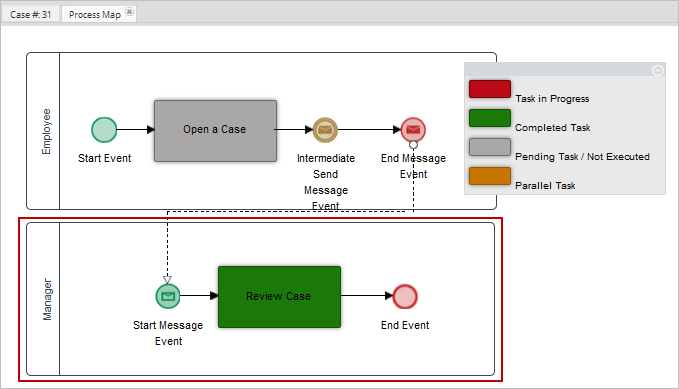
Process Information
By clicking on Process Information, a new window with information about the current process will be displayed:
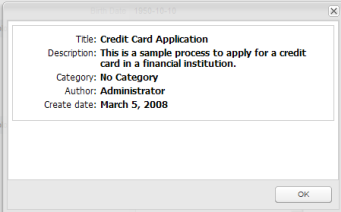
Task Information
By clicking on Task Information, a new window with information about the current task will be displayed.
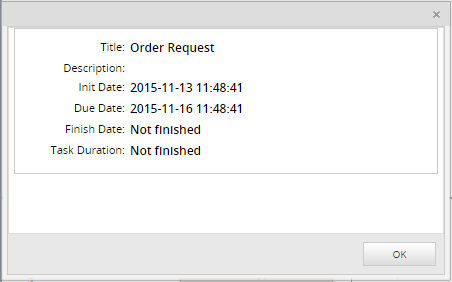
Case History
This option allows the user to view all changes made to the form fields assigned to the tasks of the process that have already been completed or are still in progress. Intermediate events are also displayed as a part of case histories. Take into consideration that to be able to see the case history of a process, the user must have view permissions for Dynaforms.
Click on the Case History option to open a new tab that lists the tasks routed or still in progress.

The Enable Action and Disable Action columns saves the date of only paused or canceled cases. If the case action is "Paused," the Enable Action column of that record displays the pause date and the Disable Action column displays the unpause date. If the case action is "Canceled," the Enable Action column of that record displays the cancel date.
Message History
The message history shows all the email notifications sent during a case. Remember that is not possible to restrict users from viewing the message history, which means that all users will be able to see the message history no matter if no permissions were set for them. For more information about how to set message history permissions, please visit the Process Permissions page.

Preview: Displays all messages sent, not only routing messages and email notifications, but also any case notes added. To be able to preview a message, a view permission must be assigned to the user.

- Resend: Resends the message. Use this option in case the message hasn't been sent or if the message needs to be sent again. To be able to resend a message, a resend permission must be assigned to the user.
Dynaforms
This option shows all the Dynaforms defined in the process. The user must have process permission to see the list of Dynaforms. The list of Dynaforms will appear during the execution of a case (Inbox, Draft) or at the end of it (Participated).
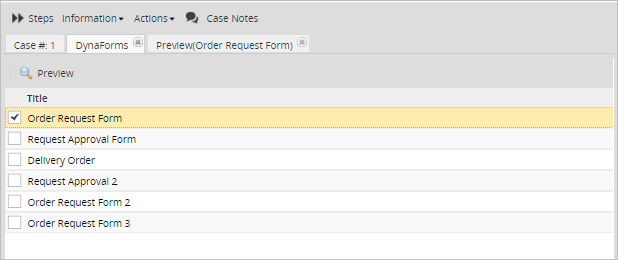
Preview
By selecting a Dynaform from the list of Dynaforms and clicking on the Preview button, a preview of the information filled in during the case will be displayed in view mode.
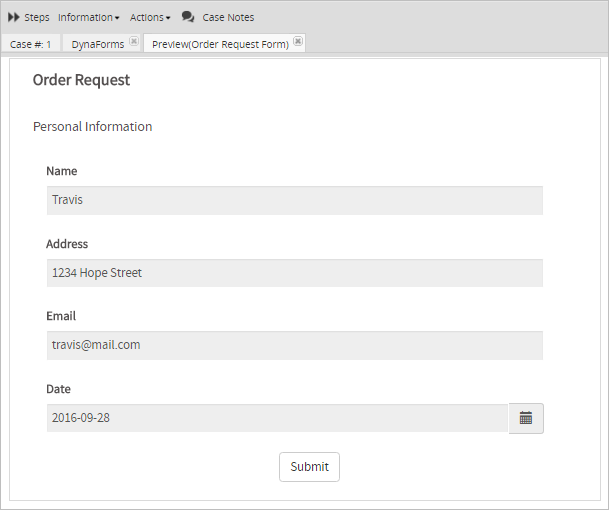
Note: A problem may occur when users that have the Dynaform permission want to download the uploaded documents in the preview of a Dynaform that has more than one file field in it. When downloading the uploaded documents, they will find that the same document is downloaded, even when the files are different. This includes all the modified and unmodified variables in each step, before and after triggers. At the moment, there is no way to determine where each file belongs, so it will always download the last input document by default. The best way to prevent this from happening is to assign different input documents to each file field in a Dynaform.
Change Log
The Change Log section displays the changes of the variable values after each step of each task in the process. This includes all the variables modified and not modified in each step, including before and after triggers.
To allow users to access the change log in a specific task, create a process permission with the type Dynaform and assign the users using the Group or User field. An example of this permission is shown below:
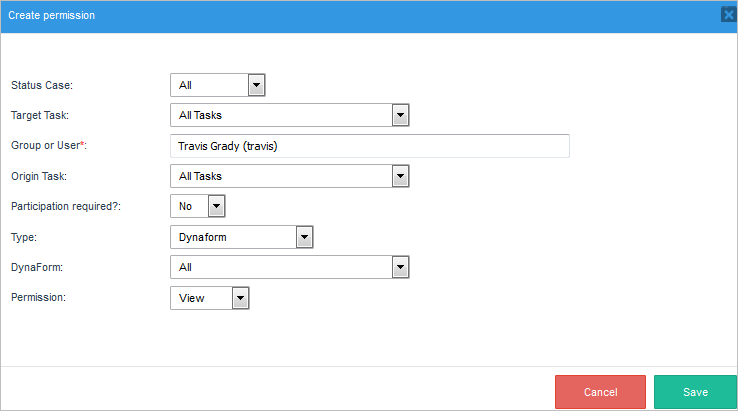
Access the change log by going to Home and opening a case. Then, go to the Information submenu and select the Change Log option.
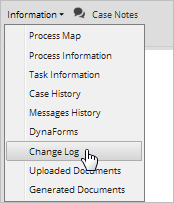
A new tab will display the content of the variables, including their values and changes through each step, as shown in the image below:
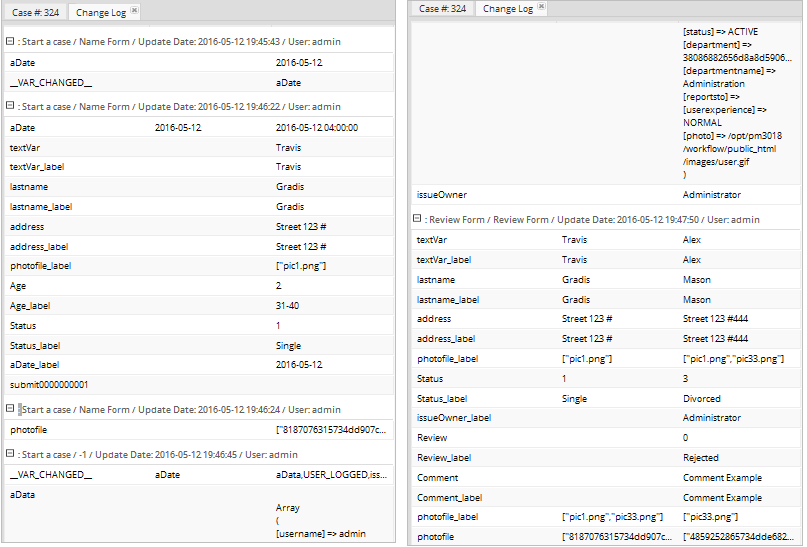
Note: Users who do not participate in the tasks defined in the permission need the PM_ALLCASES permission to search for the case using the Advanced Search option, and must have access to the Change Log option.
Uploaded Documents
This section shows all the documents uploaded by any input document in the process:

Users can download the document at any time during the process by clicking on the Download button (also by double clicking on the name of the input document):
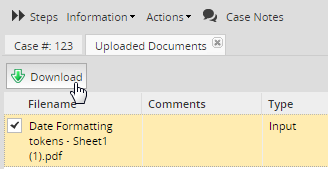
Generated Documents
This section shows all the documents generated by any output document in the process:

The document can be downloaded in .doc and .pdf formats by clicking on the corresponding icons. The file can also be downloaded by double clicking on the file name.




